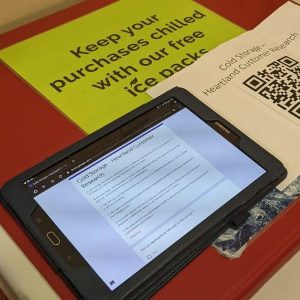University Choice Analytics: Recently, the Ministry of Education of Singapore released the results of Joint Autonomous University Graduate Employment Survey in Singapore. I remembered a few years back where I would also be one of those prospective university students who would consistently be looking at these results. While I believe that your choice of university and course should not be solely on the salary that you receive, here are some analysis of the Graduate Employment Survey 2020 of 138 Courses on which University and Course you should go to: (i.e. National University of Singapore, Nanyang Technological University, Singapore Management University, Singapore University of Technology and Design, Singapore Institute of Technology, Singapore University of Social Sciences)
Top 10 Courses in University (Median Salary)
For the top 10 (well actually 11 due to a tie) courses this year, the Median Salary (50th percentile) received by a Fresh Graduate is S$5,000 and above, with the highest Median Salary being from Nanyang Technological University, Nanyang Business School Double Degree in Business (Business Analytics) and Computer Engineering/Computing. Two other Analytics related courses from SMU and NUS also made the top 10! Do read up more on why I picked Business Analytics as a specialisation here!
The top universities of choice seem to be Nanyang Technological University, National University of Singapore and Singapore Management University! The top course verticals (based on my own classification) are Business, Science, Medicine, Computing and Law.
| University | Vertical | Degree | Median Salary |
| NTU | Business | Double Degree in Business and Computer Engineering/Computing | $5,400 |
| NUS | Science | Bachelor of Science with Honours | $5,350 |
| NTU | Medicine | Medicine | $5,250 |
| NUS | Medicine | Bachelor of Medicine and Bachelor of Surgery | $5,250 |
| NUS | Computing | Bachelor of Computing (Computer Science) | $5,243 |
| SMU | Computing | Information Systems Cum Laude and above | $5,000 |
| SMU | Law | Law Cum Laude and above | $5,000 |
| NUS | Law | Bachelor of Laws | $5,000 |
| NUS | Computing | Bachelor of Computing (Information Security) | $5,000 |
| NUS | Business | Bachelor of Science (Business Analytics) | $5,000 |
| NUS | Computing | Bachelor of Engineering (Computer Engineering) | $5,000 |
Bottom 10 Courses in University (Median Salary)
For the bottom 10 (12, due to tie) courses this year, the Median Salary received by a Fresh Graduate was S$3,000 and below. The Universities in this list is a good mix of technological and newer universities, with a combination of verticals from Business, Education, Science, Medicine and Humanities and Social Sciences.
| University | Vertical | Degree | Median Salary |
| SUSS | Education | Bachelor of Early Childhood Education | $3,000 |
| SUSS | Business | Bachelor of Accountancy | $3,000 |
| NTU | Business | Accountancy | $3,000 |
| NTU | Medicine | Biomedical Sciences and Chinese Medicine | $3,000 |
| SIT | Business | Bachelor of Hospitality Business with Honours | $3,000 |
| SIT | Science | Bachelor of Food Technology with Honours | $2,975 |
| SUSS | Business | Bachelor of Human Resource Management | $2,950 |
| SUSS | Business | Bachelor of Science in Marketing | $2,900 |
| NTU | Humanities and Social Science | Art, Design and Media | $2,800 |
| SIT | Humanities and Social Science | Bachelor of Arts with Honours in Communication Design | $2,800 |
| SIT | Humanities and Social Science | Bachelor of Arts with Honours in Interior Design | $2,700 |
| SIT | Business | Bachelor of Business Administration in Food Business Management | $2,625 |
Analysing by the Verticals
With so many options, it might be difficult to narrow down your options. Therefore, we are making it simpler for you through summaries of which course vertical you might want to select! We have done the analysis using Excel Pivot Tables and Charts to Visualise the results for you! On average, you will expect to receive the highest salary in Law and the lowest from Humanities and Social Sciences.

| Law | $ 4,863 |
| Computing | $ 4,455 |
| Medicine | $ 4,425 |
| Architecture | $ 3,950 |
| Engineering | $ 3,754 |
| Science | $ 3,651 |
| Business | $ 3,574 |
| Education | $ 3,475 |
| Humanities and Social Science | $ 3,462 |
Analysing by the Universities
With 6 Universities, you may also want to know which university would give you the largest return in terms of salary! Here’s another analysis with Excel Pivot Tables and Charts for Visualisation! From the Data, we can see that Singapore University of Technology and Design has the highest starting salary and Singapore University of Social Sciences having the lowest.

| SUTD | $ 4,075 |
| SMU | $ 4,053 |
| NUS | $ 3,995 |
| NTU | $ 3,731 |
| SIT | $ 3,494 |
| SUSS | $ 3,100 |
Best Course Vertical in terms of Median Salary in Each University
In this part, we wanted to know verticals had the highest salary for each of the universities. Here are the answers!
Nanyang Technological University: Business, Computing, Medicine
National University of Singapore: Law, Computing, Medicine
Singapore Institute of Technology: Computing
Singapore Management University: Law, Computing
Singapore University of Social Sciences: Humanities and Social Sciences
Singapore University of Technology and Design: Engineering

Conclusion
Having said all these, do note that this report is only informative in nature. While the starting salary may be an important factor, remember that that is only one of the considerations. Some other factors include passion, interest and more!
Hope that this article is helpful in making an informed choice for the next phase of your education!
If you ended up deciding on Business School, do read our post on how to make the most of your business school experience!
If you liked this page, do bookmark this site, or follow us on our LinkedIn page.
Original Cover Photo by Tan Wei Xiang (University Logos from Google Images)
Datasets obtained from Singapore Ministry of Education: https://www.moe.gov.sg/post-secondary/overview/autonomous-universities/












